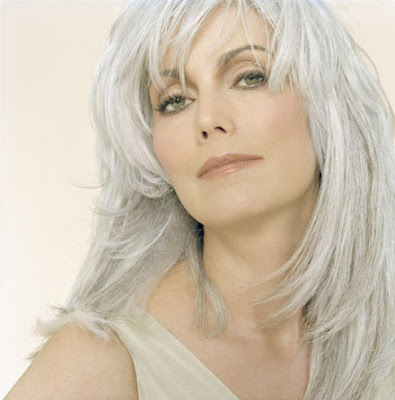 I'm not sure if any of this information makes a difference to the way I perceive Thanksgiving, or the way I celebrate Thanksgiving, but I find it interesting...
I'm not sure if any of this information makes a difference to the way I perceive Thanksgiving, or the way I celebrate Thanksgiving, but I find it interesting... MYTH #1: The Pilgrims held the first Thanksgiving.
To see what the first Thanksgiving was like you have to go to: Texas. Texans claim the first Thanksgiving in America actually took place in little San Elizario, a community near El Paso, in 1598 -- twenty-three years before the Pilgrims' festival. For several years they have staged a reenactment of the event that culminated in the Thanksgiving celebration: the arrival of Spanish explorer Juan de Onate on the banks of the Rio Grande. De Onate is said to have held a big Thanksgiving festival after leading hundreds of settlers on a grueling 350-mile long trek across the Mexican desert.
Then again, you may want to go to Virginia.. At the Berkeley Plantation on the James River they claim the first Thanksgiving in America was held there on December 4th, 1619....two years before the Pilgrims' festival....and every year since 1958 they have reenacted the event. In their view it's not the Mayflower we should remember, it's the Margaret, the little ship which brought 38 English settlers to the plantation in 1619. The story is that the settlers had been ordered by the London company that sponsored them to commemorate the ship's arrival with an annual day of Thanksgiving. Hardly anybody outside Virginia has ever heard of this Thanksgiving, but in 1963 President Kennedy officially recognized the plantation's claim.
MYTH #2: Thanksgiving was about family.
If by Thanksgiving, you have in mind the Pilgrim festival, forget about it being a family holiday. Put away your Norman Rockwell paintings. Turn off Bing Crosby. Thanksgiving was a multicultural community event. If it had been about family, the Pilgrims never would have invited the Indians to join them.
MYTH #3: Thanksgiving was about religion.
No it wasn't. Paraphrasing the answer provided above, if Thanksgiving had been about religion, the Pilgrims never would have invited the Indians to join them. Besides, the Pilgrims would never have tolerated festivities at a true religious event. Indeed, what we think of as Thanksgiving was really a harvest festival. Actual "Thanksgivings" were religious affairs; everybody spent the day praying. Incidentally, these Pilgrim Thanksgivings occurred at different times of the year, not just in November.
MYTH #4: The Pilgrims ate turkey.
What did the Pilgrims eat at their Thanksgiving festival? They didn't have corn on the cob, apples, pears, potatoes, or even cranberries. No one knows if they had turkey, although they were used to eating turkey. The only food we know they had for sure was deer. (And they didn't eat with a fork; they didn't have forks back then.)
So how did we get the idea that you have turkey and cranberry and such on Thanksgiving? It was because the Victorians prepared Thanksgiving that way. And they're the ones who made Thanksgiving a national holiday, beginning in 1863, when Abe Lincoln issued his presidential Thanksgiving proclamations, two of them: one to celebrate Thanksgiving in August, a second one in November. Before Lincoln, Americans outside New England did not usually celebrate the holiday. (The Pilgrims, incidentally, didn't become part of the holiday until late in the 19th century. Until then, Thanksgiving was simply a day of thanks, not a day to remember the Pilgrims.)
MYTH #5: The Pilgrims landed on Plymouth Rock.
According to historian George Willison, who devoted his life to the subject, the story about the rock is all malarkey, a public relations stunt pulled off by townsfolk to attract attention. What Willison found out is that the Plymouth Rock legend rests entirely on the dubious testimony of Thomas Faunce, a 95-year-old man, who told the story more than a century after the Mayflower landed. Unfortunately, not too many people ever heard how we came by the story of Plymouth Rock. Willison's book came out at the end of World War II and Americans had more on their minds than Pilgrims then. So we've all just gone merrily along repeating the same old story as if it's true when it's not. And anyway, the Pilgrims didn't land in Plymouth first. They first made landfall at Provincetown. Of course, the people of Plymouth stick by hoary tradition. Tour guides insist that Plymouth Rock is the rock.
MYTH #6: Pilgrims lived in log cabins.
No Pilgrim ever lived in a log cabin. The log cabin did not appear in America until late in the 17th century, when it was introduced by Germans and Swedes. The very term "log cabin" cannot be found in print until the 1770s. Log cabins were virtually unknown in England at the time the Pilgrims arrived in America. So what kind of dwellings did the Pilgrims inhabit? As you can see if you visit Plimoth Plantation in Massachusetts, the Pilgrims lived in wood clapboard houses made from sawed lumber.
MYTH #7: Pilgrims dressed in black.
Not only did they not dress in black, they did not wear those funny buckles, weird shoes, or black steeple hats. So how did we get the idea of the buckles? Plimoth Plantation historian James W. Baker explains that in the 19th century, when the popular image of the Pilgrims was formed, buckles served as a kind of emblem of quaintness. That's the reason illustrators gave Santa buckles. Even the blunderbuss, with which Pilgrims are identified, was a symbol of quaintness. The blunderbuss was mainly used to control crowds. It wasn't a hunting rifle. But it looks out of date and fits the Pilgrim stereotype.
MYTH #8: Pilgrims, Puritans -- Same Thing
Though even presidents get this wrong -- Ronald Reagan once referred to Puritan John Winthrop as a Pilgrim -- Pilgrims and Puritans were two different groups. The Pilgrims came over on the Mayflower and lived in Plymouth. The Puritans, arriving a decade later, settled in Boston. The Pilgrims welcomed heterogeneousness. Some (so-called "strangers") came to America in search of riches, others (so-called "saints") came for religious reasons.
The Puritans, in contrast, came over to America strictly in search of religious freedom. Or, to be technically correct, they came over in order to be able to practice their religion freely. They did not welcome dissent. That we confuse Pilgrims and Puritans would have horrified both. Puritans considered the Pilgrims incurable utopians. While both shared the belief that the Church of England had become corrupt, only the Pilgrims believed it was beyond redemption. They therefore chose the path of Separatism. Puritans held out the hope the church would reform.
MYTH #9: Puritans hated sex.
Actually, they welcomed sex as a God-given responsibility. When one member of the First Church of Boston refused to have conjugal relations with his wife two years running, he was expelled. Cotton Mather, the celebrated Puritan minister, condemned a married couple that had abstained from sex in order to achieve a higher spirituality. They were the victims, he wrote, of a "blind zeal."
MYTH #10: Puritans hated fun.
H.L. Mencken defined Puritanism as "the haunting fear that someone, somewhere, may be happy!" Actually, the Puritans welcomed laughter and dressed in bright colors (or, to be precise, the middle and upper classes dressed in bright colors; members of the lower classes were not permitted to indulge themselves -- they dressed in dark clothes). As Carl Degler long ago observed, "The Sabbatarian, antiliquor, and antisex attitudes usually attributed to the Puritans are a 19th-century addition to the much more moderate and wholesome view of life's evils held by the early settlers of New England."
This article, by Rick Shenkman, was first published by History News Network
Rick Shenkman is the editor of the History News Network.
 It’s New Year’s Eve. I can’t believe 2011 is almost over. My, how time flies! This year has been a real lulu…generally good…mostly successful…occasionally even fabulous! I practiced yoga semi-regularly…excelled in pole-dancing…managed to adhere to a sometimes healthy/often dreadful diet…lost twenty pounds…and found ten of them again this month at the Christmas buffet table…
It’s New Year’s Eve. I can’t believe 2011 is almost over. My, how time flies! This year has been a real lulu…generally good…mostly successful…occasionally even fabulous! I practiced yoga semi-regularly…excelled in pole-dancing…managed to adhere to a sometimes healthy/often dreadful diet…lost twenty pounds…and found ten of them again this month at the Christmas buffet table…




















































